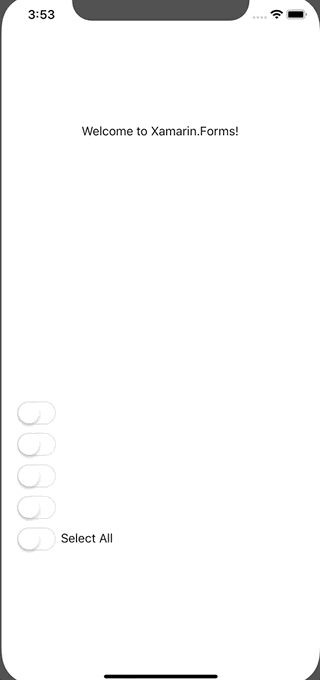J'ai 5 interrupteurs de formulaire, l'un d'entre eux est select all qui devrait sélectionner tous les autres interrupteurs à true. J'ai une logique qui veut qu'après avoir activé l'interrupteur Select All, on ne peut pas le désactiver manuellement. La seule façon de désactiver ce bouton (Select all) est de changer les autres boutons en false/Off.
J'ai géré cela à partir du modèle de vue avec une logique si mes 4 autres boutons sont vrais, je veux laisser l'utilisateur régler le bouton select all sur false par la logique get set, mais avec IOS si l'utilisateur peut forcer et maintenir le bouton sur false pendant plusieurs secondes, le bouton s'arrête sur false. J'ai essayé avec des comportements qui me donnent également les mêmes résultats. même si je peux désactiver le bouton et l'activer, cela ne me pose aucun problème, mais selon la documentation de xamarine, il n'est pas possible d'ajouter les commandes.
bool _selectAll;
public bool SelectAll
{
get
{
return _selectAll;
}
set
{
SetProperty(ref _selectAll, value);
if (_activeAll && !(_button1 && _button2 && _button3 && _button4))
{
Button1= true;
Button2= = true;
Button3= = true;
Button4= = true;
}
if (!_selectAll && (_emailStatus && _textStatus && _callStatus && _postStatus))
{
SelectAll= true;
}
}
}



